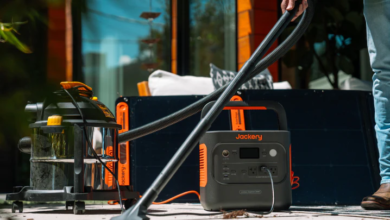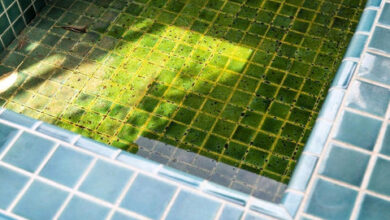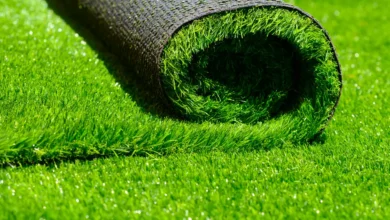
How to Prevent Water Ponding on Your Roof
Did you know that water ponding on your roof can lead to severe consequences that can jeopardize the structure of your home or business? Water pooling can be expensive if you do not tend to the problem sooner.
Otherwise, you may have to undergo a complicated process to avoid sustained water retention issues. Here is everything you need to know about standing water on the roof and what happens if you leave this untouched for a long time.
Table of Contents
What Is Water Ponding?
Water ponding is when you have a lot of water buildup and stagnate water on a flat surface like your roof. If this is left untreated for a while, you may see severe damage to your commercial property or residential home.
Massive puddles can form on top of your roof’s surface. This happens when the drainage system is not good enough. It could lead to a large volume of liquid that cannot evaporate off your roof.
When the stagnant water has nowhere else to go or fade, it will sit on your roof’s flat surface.
However, a professional roofing contractor should assess pooling water on top that is left there for more than a few days. Check out this resource to learn more about flat roof waterproofing and why this is essential.
The forces of gravity that cause water to build up on flat roofs cause many problems, especially since the water level can only go down.
Pooling water weakens your roof system, compromising its structural integrity if you leave the water puddles on the surface untreated for longer than a few days.
Why Call an Expert?
Many roofing materials and membranes are water-resistant. However, they are not waterproof. This is crucial to understand when you want to consider the potential damage from water pooling.
Even though most roof membranes seal the water away just enough, there is only so much they can prevent. If you have heavy rainfall with a lot of water sitting on the roof, even the best materials will not help you avoid this problem.
Think about the design of your roof. You need to pick an excellent roofer who can fix this issue. With some help from experts, you can save money without going through a lot of unnecessary maintenance, expensive phone calls, and repairs down the line.
Causes of Water Ponding
The leading cause of standing water on the roof is your roof’s design. If the roof’s shape and layout do not match the roofing project’s architectural plans, you will have many problems down the road.
However, roofing complications are challenging to see from the outside. Many people mistakenly believe that flat roofs are easier to repair and replace.
If you do not have a good roofing company working with you, you will struggle to examine the roof from a systemic perspective.
You need a roofing expert to examine the beams and joists under your roof. This is because these will sag after a while, which creates a slight pitch on a flat roof that can collect a lot of water.
Multiple Layers
The first layer of your flat roof should always be made of gravel and tar. However, other subsequent layers may use rubber during the construction phase.
When this rubber is placed over the original gravel and tar base, it may not be used evenly enough to remove existing slopes on your roof that can become a bowl for collecting water.
Crushed Insulation
Roofing membranes with rubber also have thick layers of insulation on the bottom. This helps trap heat inside your property during the winter months while keeping cold air inside during summer.
You need to have a well-insulated roof to avoid losing most of your energy through the roof. However, many people have this insulation made from a malleable material.
This can cause the insulation to get depressed, mainly due to a lot of snow or foot traffic.
When you get uneven surfaces over time, all the liquid can pond in those sunken areas, especially since they are too deep for the water to evaporate quickly. The best thing to do is add more insulation or change your strategy.
How to Prevent Water Ponding?
Tapered insulation or polyisocyanurate can be used to prevent water pooling. This is because the slope helps the water flow while debris is channeled towards the drain.
Otherwise, you need to focus on your roof’s design to eliminate anything with a low slope that does not have enough drainage. Roofs are not built to hold water.
Therefore, property owners need a positive drainage system. This is when a flat roof gets made with graded areas. Then you can help lead all the water away from where it commonly collects.
Positive drainage will let water flow away into large areas where it can quickly drain or evaporate. A low slope roof will have a higher space at the top, so gravity can pull the water into your gutters.
Keep Drains Clean
Keeping your drain areas clean from the debris can help you avoid water ponding. If your drains are not cleaned and maintained often, water will be collected near your gutters.
The longer you neglect this, the larger the puddles will become. Then there will also be more weight on your roof. This excess water can also reverse its direction to go up the drain, and this will cause a leak in your building.
Prevent Water Ponding Today
Now that you know all about water ponding and how dangerous it is for the structure of your home, it is time to start clearing debris from the drains to help prevent water from accumulating.
Remember that you should always check your roof after a storm to ensure no accumulated water is sitting on top for longer than 2 days.
If you enjoyed reading this roofing guide, check out some of our other posts for more information.








